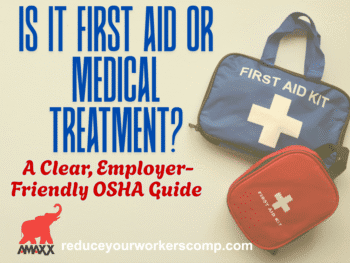
Choosing the Treating Doctor
Employees in most jurisdictions have the right to choose their healthcare provider. Each jurisdiction has its criteria for when this occurs and usually excludes where the employee is seen immediately following a work injury. The general rules for the selection of a treating physician usually include:
- A time limitation of 30-60 days following the work injury; and
- Once, an employee treats a doctor on two consecutive occasions.
Click Link to Access Free PDF Download
“The 6-Step Process To Determine Workers’ Comp Injury Causation”
Once the selection is made, the employee needs to demonstrate a change in provider is in the “best interests of the parties.” Requests to change a healthcare provider after the initial selection should be made with the assistance of in-house or defense counsel.
The employee’s right to choose their treating doctor does not preclude the defense interests from being proactive and directing healthcare by making suggestions or recommendations. Proactive employers can establish a relationship with a healthcare provider group for employees to see following workplace injury.
Tools to Direct Healthcare in Work Comp
Employers and other interested defense interests can take other proactive steps in directing healthcare following a work injury. Implementing some of these resources will pay immediate dividends.
- Telephonic Nurse Injury Triage: This service is usually provided telephonically and provided by a nurse who is on call. A supervisor or manager can call these healthcare professionals following a work injury and receive instruction on how to care for an injury and determine if additional medical care is required.
- Field Case Management: This service is also provided by a nurse and can assist in guiding a claim handler on how to deal with issues concerning lost time from work, strategies to help employees not miss medical appointments, and recognizing the care that is not consistent with clinical guidelines.
- Utilization Review: This service includes prospective, concurrent, and retrospective reviews of an employee’s medical care. The goal is to identify whether the care being recommended by the treating doctor will cure and relieve the effects of the work injury.
- Medical Advisor and Directors: This service is usually performed by an in-house physician or contracted medical doctor who can review claims, clarify what medical care may be needed, and make recommendations on moving a file to settlement or closure.
These are some of the many tools available to employers and insurers interested in resolving troublesome files and seeking to reduce program costs.
Consider Med-Legal Conferences for Troublesome Claims
Some claims require the medical and legal interests to meet and confer regarding the direction of a claim. These conferences involve the claim handler, defense attorney, and medical advisor. The goal of the med-legal conferences is to:
- Assist the defense attorney in understanding the complex medical nature of a claim;
- Assist the medical advisor to understand how the legal issues impact ongoing medical care; and
- Assist the claim handler in developing a strategy to move the case forward cost-effectively.
Sometimes it takes the knowledge of the collective whole to solve problems. The use of a med-legal conference can accomplish this complex goal. Tools used before such conferences include physician peer review services and the independent medical examination.
Conclusions
Controlling workers’ compensation program costs include the need for defense interests to be proactive and direct the post-injury medical care of the employee. There are limitations to what can be done. Notwithstanding these barriers, they can seek to provide medical to the employee following an injury within a network of doctors at nearby locations. They can also use specific tools that assist in evaluating the injury and ensure only reasonable and necessary care is being provided. There can be an immediate reduction in medical dollars spent on a claim when done correctly.
 Author Michael Stack, CEO Amaxx LLC. He is an expert in workers’ compensation cost containment systems and helps employers reduce their workers’ comp costs by 20% to 50%. He works as a consultant to large and mid-market clients, is a co-author of Your Ultimate Guide To Mastering Workers Comp Costs, a comprehensive step-by-step manual of cost containment strategies based on hands-on field experience, and is the founder & lead trainer of Amaxx Workers’ Comp Training Center, which offers the Certified Master of Workers’ Compensation national designation.
Author Michael Stack, CEO Amaxx LLC. He is an expert in workers’ compensation cost containment systems and helps employers reduce their workers’ comp costs by 20% to 50%. He works as a consultant to large and mid-market clients, is a co-author of Your Ultimate Guide To Mastering Workers Comp Costs, a comprehensive step-by-step manual of cost containment strategies based on hands-on field experience, and is the founder & lead trainer of Amaxx Workers’ Comp Training Center, which offers the Certified Master of Workers’ Compensation national designation.
Contact: mstack@reduceyourworkerscomp.com.
Workers’ Comp Roundup Blog: http://blog.reduceyourworkerscomp.com/
©2022 Amaxx LLC. All rights reserved under International Copyright Law.
Do not use this information without independent verification. All state laws vary. You should consult with your insurance broker, attorney, or qualified professional.














